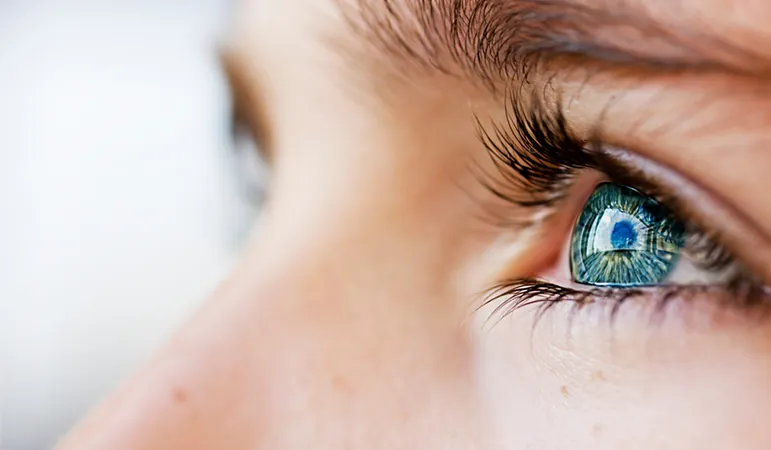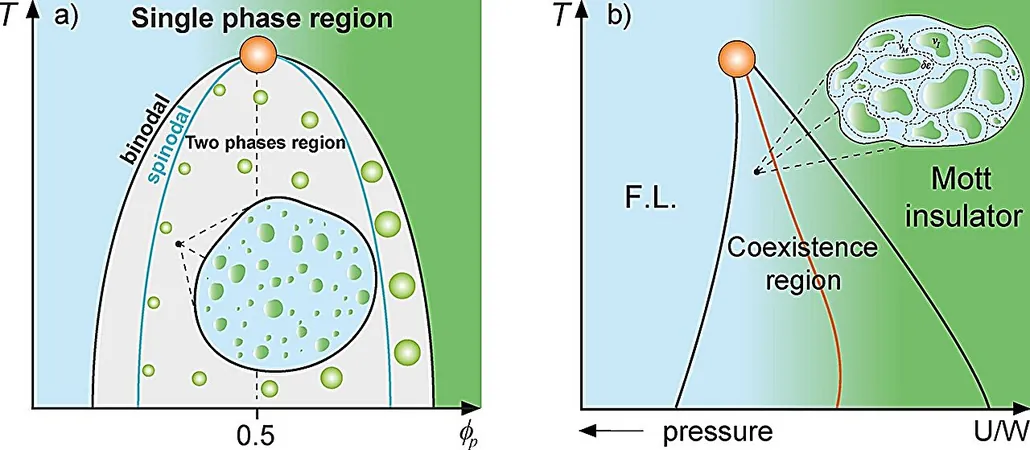
Groundbreaking Study Reveals How Individuals with Autism Perceive Faces Differently – Here's Why It Matters!
2024-10-15
Author: Noah
Groundbreaking Study Reveals How Individuals with Autism Perceive Faces Differently – Here's Why It Matters!
A transformative study conducted by researchers at the UBC Faculty of Medicine has unveiled significant insights into the distinctive ways individuals with Autism Spectrum Disorder (ASD) perceive faces. The research indicates that many people with ASD prefer to view faces from a distance and at side angles, which can lead to fewer encounters with familiar faces daily.
Published in the peer-reviewed journal *Current Biology*, this research serves as a critical piece in understanding the facial recognition challenges faced by those with ASD and highlights potential strategies to enhance these skills. This study is pioneering as it is the first to empirically examine how adults with ASD perceive faces, utilizing over 360 hours of first-person video footage captured through glasses equipped with cameras worn by participants.
Dr. Ipek Oruc, the study's senior author and an associate professor in UBC’s Department of Ophthalmology and Visual Sciences, emphasizes, “Face recognition and processing skills are crucial for social interactions and relationship development. This research illuminates how individuals with ASD experience faces, opening avenues for targeted support.”
Typically, the ability to recognize faces evolves over time, with regular exposure to familiar faces being a vital component. Previous studies indicated that those with ASD often develop facial recognition skills at a lower level compared to neurotypical individuals, but the underlying reasons for this disparity have remained elusive until now.
Upon analyzing the collected footage, Dr. Oruc and her team discovered a striking statistic: adults with ASD are exposed to faces 30% less frequently than their non-ASD counterparts, primarily due to reduced interactions with familiar faces such as family and friends. Interestingly, both groups encountered a similar amount of unfamiliar faces in public settings.
Further analysis revealed that individuals with ASD generally viewed familiar faces from a significantly greater distance. For example, while familiar faces were viewed at an average distance of approximately 229.77 cm (around 7.5 feet) by those with ASD, neurotypical individuals were at 115.87 cm (about 3.8 feet). This disparity in viewing distance is crucial; larger faces seen up close are easier to recognize, which is essential for developing facial recognition skills.
Dr. Todd Kamensek, the first author of the paper and a recent UBC neuroscience graduate, adds, “The differing face-viewing experiences among those with ASD could elucidate their difficulties in face recognition.” The study found that individuals with ASD often look at familiar faces from side profiles instead of directly facing them. This suggests that both the distance and angle at which they view faces may hinder their ability to develop robust facial recognition abilities.
In light of these findings, Dr. Oruc and her colleagues advocate for the implementation of face recognition training programs aimed at assisting individuals with ASD in improving these vital skills. Such programs have shown promise in randomized control trials, demonstrating their potential to enhance holistic processing, emotion recognition, memory for faces, and overall social skills.
“Collectively, our findings emphasize the promising effectiveness of face training programs to foster more efficient face processing strategies and alleviate some social challenges,” Dr. Oruc concludes.
These revolutionary insights could pave the way for tailored interventions that can significantly improve social interactions for people with autism, suggesting that understanding the nuances of perception is key to supporting these individuals in their everyday lives.









 Brasil (PT)
Brasil (PT)
 Canada (EN)
Canada (EN)
 Chile (ES)
Chile (ES)
 España (ES)
España (ES)
 France (FR)
France (FR)
 Hong Kong (EN)
Hong Kong (EN)
 Italia (IT)
Italia (IT)
 日本 (JA)
日本 (JA)
 Magyarország (HU)
Magyarország (HU)
 Norge (NO)
Norge (NO)
 Polska (PL)
Polska (PL)
 Schweiz (DE)
Schweiz (DE)
 Singapore (EN)
Singapore (EN)
 Sverige (SV)
Sverige (SV)
 Suomi (FI)
Suomi (FI)
 Türkiye (TR)
Türkiye (TR)